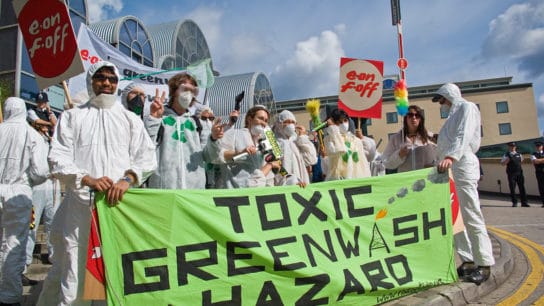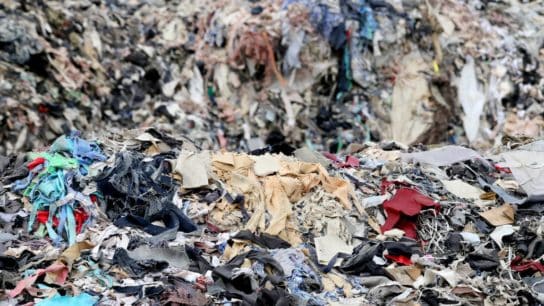Preliminary studies have identified a positive correlation between COVID-19-related mortalities and air pollution. There is also a plausible association of airborne particles assisting the viral spread. How does air pollution as an environmental health hazard contribute to the spread of COVID-19 in societies ? And how does it play a role in further affecting human health in this pandemic?
—
It has been widely established that air pollution compromises the respiratory system. According to the WHO, ambient air pollution causes 4.2 million premature deaths annually. Amidst the COVID-19 pandemic, scientists have discovered that excess pressure may be exerted on the patient’s respiratory system due to air pollution.
How Air Pollution as an Environmental Health Hazard Could Contribute to the Spread of COVID-19
A previous ecological study conducted during the SARS pandemic of 2003 that affected parts of China, Hong Kong and Canada discovered a positive correlation between SARS-related deaths and ambient air pollution in both short-term and long-term exposure. Given the close relationship and similarities in the symptoms of COVID-19 and SARS, it is anticipated that a similar observation may be found in the COVID-19 pandemic. This provides an indication of how air pollution may affect a person infected with COVID-19.
A pre-print (i.e. studies awaiting peer-review) ecological study from Harvard University investigates whether long-term average exposure to fine particulate matter (PM2.5) is associated with an increased risk of COVID-19 death in the US. The study found that even a small increase of 1 μg/m3 in PM2.5 levels was associated with an 8% increase in COVID-19-related fatality.
Some scholars however, argue that an ecological study cannot be regarded as epidemiology due to ecological bias (i.e. lack of individual-level data), therefore it is unable to establish a cause-and-effect relationship. There are also multiple factors involved that may affect the results, for example, the temporal difference of the virus outbreak among the individual county, and the intervention time of the county to adopt physical distancing policies. Consequently, the study may overestimate the risk of COVID-19-related deaths owing to air pollution.
This positive correlation between increased death rates due to COVID-19 and air pollution has also been observed in Italy. Northern Italy is one of the most polluted areas in Europe, where a higher level of mortality related to the COVID-19 virus was discovered. A study concluded that the high air pollution loading could be a co-factor causing the high fatality rate due to the COVID-19 infection.
Prior exposure to air pollution may aggravate the health impacts of COVID-19 and increase the risk of death by suppressing immunity. A systematic review has identified that people with prior chronic diseases like hypertension, diabetes, respiratory system disease and cardiovascular disease could be more vulnerable to COVID-19 by triggering pro-inflammatory responses and causing immunity impairment.
You might also like: Another Side Effect of COVID-19: The Surge in Plastic Pollution
Does Air Pollution Affect the Viral Spread of COVID-19?
It is believed that the main route of transmission of the virus is through human respiratory droplets and direct contact, according to the Joint Mission report from China in late February. Yet, it has also been hypothesised that the COVID-19 virus can be transmitted by particulate matter (PM) and aerosols. A preliminary experimental analysis was conducted which identified the gene of COVID-19 in an ambient PM sample in Italy, and concluded that PM may potentially act as a transporter of the virus, although the virulence of COVID-19 remains unknown (i.e. vitality of the virus). Scientists also suggest that PM may serve as an early indicator of the epidemic recurrence by identifying the virus genome in PM.
Current Air Quality Improvement From Lockdowns
Many countries have been locked down to maintain physical distancing among citizens to slow down the viral spread of COVID-19. The lockdowns have not only helped to reduce viral transmission but also the air pollution. A preprint study in China estimated that the lockdown mitigated a quarter of PM2.5 emissions and improved the Air Quality Index, helping prevent monthly premature deaths of 24 000 to 36 000 people.
The NO2 level also dropped dramatically after the lockdown (NO2 irritates human airways and impairs immunity to lung infections). Another study from China estimated that the improved NO2 levels from January to March due to the imposed lockdowns helped prevent more than 8,000 NO2 -related deaths, 65% of which are due to cardiovascular disease and chronic obstructive pulmonary disease (COPD).
Fossil fuel burning is one of the major anthropogenic sources of air pollution. A study modelled that emissions from fossil fuel combustion is one of the major causes of air pollution, which contributes to 65% of additional mortality due to the exposure. Given that renewable energy is cleaner than fossil fuel burning, a transition to renewable energy is essential to mitigate the climate crisis.
The plausible linkage between air pollution and viral spread still requires more thorough studies to confirm the hypothesis. Air pollution, on the other hand, has long been proving its harmful effect on human health and causes a burden on healthcare systems. The preliminary studies that have shown a possible link between air pollution exposure and COVID-19 related deaths, no matter how small, should be an indication that air pollution needs to be urgently tackled. A global transition to cleaner energy will help safeguard the health of humanity and prevent these unnecessary deaths.
Local governments should focus on mitigating air pollution to address the urgent issue of deaths caused by COVID-19, rather than aspire towards eliminating air pollution altogether. The positive effects of localised lockdown regulations in alleviating air pollution can be a blueprint towards this end. Without invoking a national mandate, discriminative regulations should be introduced that focus on areas more severely affected by COVID-19 or air pollution. Measures could include designating times for motor vehicle use, reducing smoke from agricultural and waste burning around cities, and pausing activities which create dust plumes such as construction while expanding public sanitation services and related employment to keep streets cleaner.


















